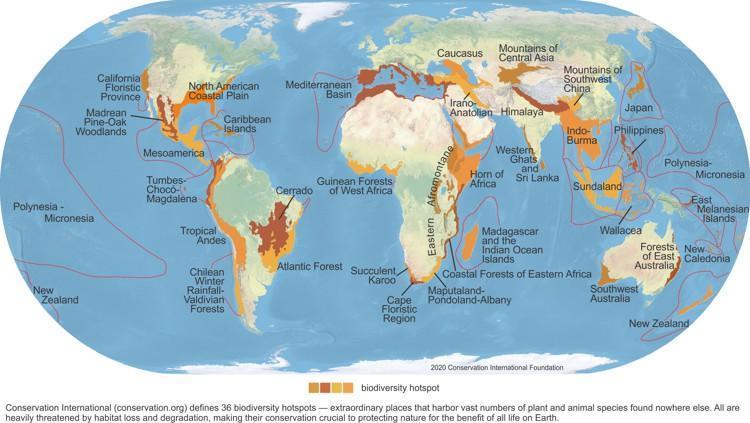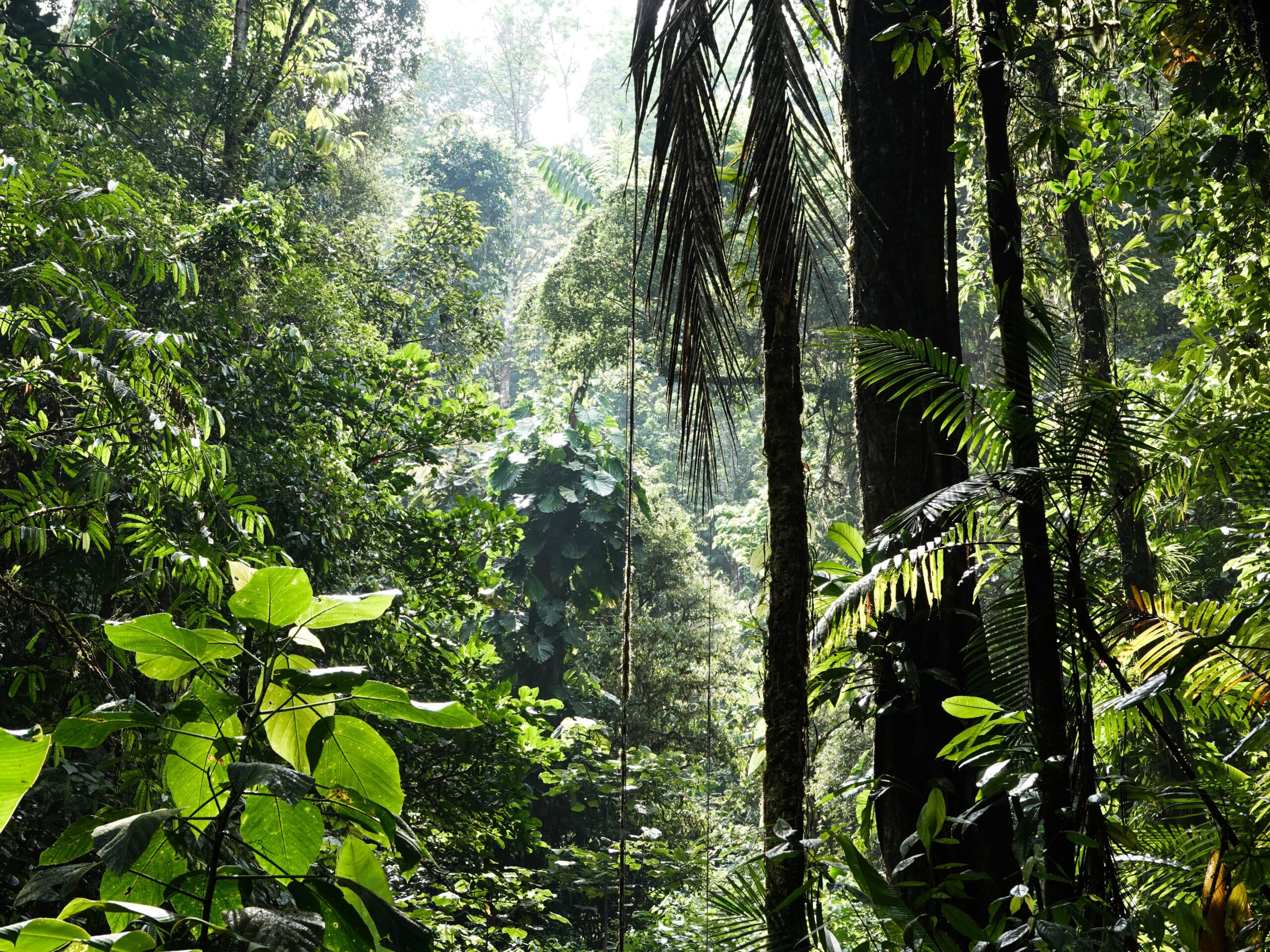The Importance of Biodiversity
Biodiversity refers to the variety of life that may be found in a given place. It includes animals, plants, fungi, and even microbes such as bacteria.
Read more: What Is Biodiversity?
All species, including humans, depend on one another to thrive. Biodiversity provides all of the services required to make the Earth a livable planet. This article will help you understand the importance of different aspects of biodiversity, including the ecosystem services provided by biodiversity to humans.
Key Takeaways
- Terrestrial biodiversity provides three important ecosystem services (more…)
- Marine biodiversity provides several direct values to humans and the environment (more…)
- Biodiversity hotspots are areas that are biologically rich and threatened (more…)
- Biodiversity increases ecosystem productivity in different ways (more…)
- Biodiversity benefits for humans extend beyond food, air, and water (more…)
The Importance of Terrestrial Biodiversity
Terrestrial biodiversity includes all land-based species such as people, animals, plants, and microbes that live in terrestrial habitats such as forests, deserts, and wetlands. Each element of an ecosystem is critical to preserving the balance of life on land. The importance of terrestrial biodiversity cannot be understated; if one of these elements is removed from the correlating system of terrestrial biodiversity, we will face the threat of different ecological disasters. Biodiversity provides crucial benefits to humans known as “ecosystem services,” or direct benefits provided to humans from the environment.
Here are three ecosystem services provided by terrestrial biodiversity:
1. It Provides a Livable Environment
All types of forests contribute to nature’s ability to deal with natural disasters. For example, the rainforest is one of the most biologically diverse areas on land. Every year, the dense and lush vegetation absorbs around 2.4 billion metric tons of carbon dioxide. Without the rainforest’s biodiversity, here are some possibilities of what might happen:
- We could lose the 23% of climate mitigation provided by tropical trees alone, accelerating the global warming process.
- The quality of the air may deteriorate, as trees play a crucial role in providing us with clean air.
2. It Prevents Extinctions
Damaging one of the elements of an ecosystem that is co-dependent on other parts of the ecosystem can cause a massive extinction of various types of species. A wide array of life forms helps ecosystems thrive, and without biodiversity, certain plants or animals may be more prone to extinction. Here’s what will happen if we continue losing our rainforests:
- Almost half of the world’s plant, animal, and microbe species will be extinct or threatened in the next several decades.
- We could lose 70% of the 3,000 cancer-fighting plants such as Vincristine and Periwinkle, which can only be found in the tropical rainforests.
3. It Provides Fresh Water
Terrestrial biodiversity contributes to the supply of fresh water in several ways.
- Biodiversity in forests plays an important part in the water cycle’s functions by regulating transpiration and evaporation rates, as well as how water is channeled and stored in watersheds.
- Rainfall washes pollutants such as soil particles, fertilizers, and pesticides down l from urban and agricultural lands to water bodies. Diverse wetlands improve water quality by removing pollutants from the surface of waters through important pollutant removal processes such as sediment trapping, nutrient removal, and chemical detoxification.
The Importance of Marine Biodiversity
Marine biodiversity is the variety of life in the ocean. Although the ocean may appear to be isolated from non-marine life forms, marine biodiversity performs a very important role in keeping life on Earth balanced and habitable. Here are some of the most essential direct values that marine biodiversity provides:
It Shoulders the Economy and Supports Livelihoods
Marine biodiversity provides almost half of the world population’s livelihood and about 5% of the global gross domestic product.
- Over 3 billion people rely on marine biodiversity for a living through activities such as fishing and aquaculture, which makes up about 3 trillion USD of global market value each year.
- More than 210 million people rely on mangrove forests as their primary source of food.
It Supports Ecological Balance
Photosynthesizing marine species play a vital role in our planet’s carbon cycle and the production of oxygen.
- Marine biodiversity such as corals and phytoplankton provides half of the oxygen we breathe and absorbs around 26% of the carbon dioxide released into the atmosphere each year. Without their help, the rainforests alone would not be able to absorb all the carbon in the atmosphere, and the supply of oxygen would be reduced.
Biodiversity Hotspots
Biodiversity hotspots are defined as areas that are both biologically rich (with a diverse range of flora and fauna) and critically threatened, usually by human activities and pollution.
- Biodiversity hotspots make up about only 2.3% of Earth’s land surface, but 44% of the world’s plants and 35% of land vertebrates live in these regions.
- To qualify as a biodiversity hotspot, a region must meet two strict criteria:
- The region must have at least 1,500 indigenous vascular plants and
- The region must have 30% or less of its original natural vegetation. In other words, it must be threatened.
- The image below shows the countries and regions that are considered biodiversity hotspots

Biodiversity Provides Direct Value to Our Ecosystems
Biodiversity increases ecosystem productivity in many different ways and it ensures the natural sustainability of all life forms. Rich biodiversity supports thriving ecosystems that provide the following ecological services:
Food Security
Not only does biodiversity ensure a stable natural food chain, but it is also the foundation of agriculture. Generally, the greater the amount of vegetation in an area, the greater the variety of crop products available. Sustainable maintenance of biodiversity is essential for the long-term production of food and other agricultural products, as well as the benefits they provide to humanity, such as food security and nutrition. The permaculture farming approach is one best examples of this. Soil biodiversity also helps increase agricultural resilience to drought, making farming in drought conditions easier.
Regenerative agriculture is another method that focuses on increasing biodiversity to support high crop yields without degrading the environment.
Resistance to Natural Disasters
Biodiversity offers protection from different kinds of natural disasters, including:
Erosion and Landslides
- Insects, nematodes, bacteria, and other microorganisms keep the soil rich and fertile by contributing to the nutrient cycle, allowing plants and trees to thrive. As a result, natural disasters such as soil erosion and landslides will be reduced.
Storm Surges and Floods
- Mangroves play an important role in providing ecosystem-based protection against storm surges in coastal areas. Mangrove forests slow the flow of water as it passes through their roots, trunks, and thick leaves.
- The roots of other plants and trees absorb excess water from overflowing rivers, causing floods during typhoon seasons.
Coral Bleaching and Typhoons
- Phytoplankton absorbs approximately 37 billion metric tons of CO2, the same amount of carbon captured by 1.70 trillion trees. This absorption helps to prevent ocean acidification, which raises the temperature of seawater, leading to frequent stronger typhoons and coral reef bleaching.
Biodiversity Benefits Humanity
Biodiversity’s benefits to humans extend beyond the food, air, and water we consume. Although food security, oxygen, and clean water are the essential needs of humans, biodiversity has also proven beneficial to our psychological and physical well-being.
Psychological Health Benefits
Nature engagement has been shown to improve both physiological and psychological wellness. Contact with nature has also appeared to increase mental performance and reduce stress. The rate of depression and loneliness is considerably lower among those who live in areas with more green space (10% or more than usual). Protecting biodiversity allows us to maintain green spaces for these purposes.
Physical Health Benefits According to a study, nature exposure has been linked to increasing physical activity, improving levels of self-esteem, strengthening the immune system, and decreasing rates of morbidity and other medical problems. People who live in biodiverse nature environments are less likely to suffer from allergies and other chronic inflammatory diseases than those who live in urbanized areas.
